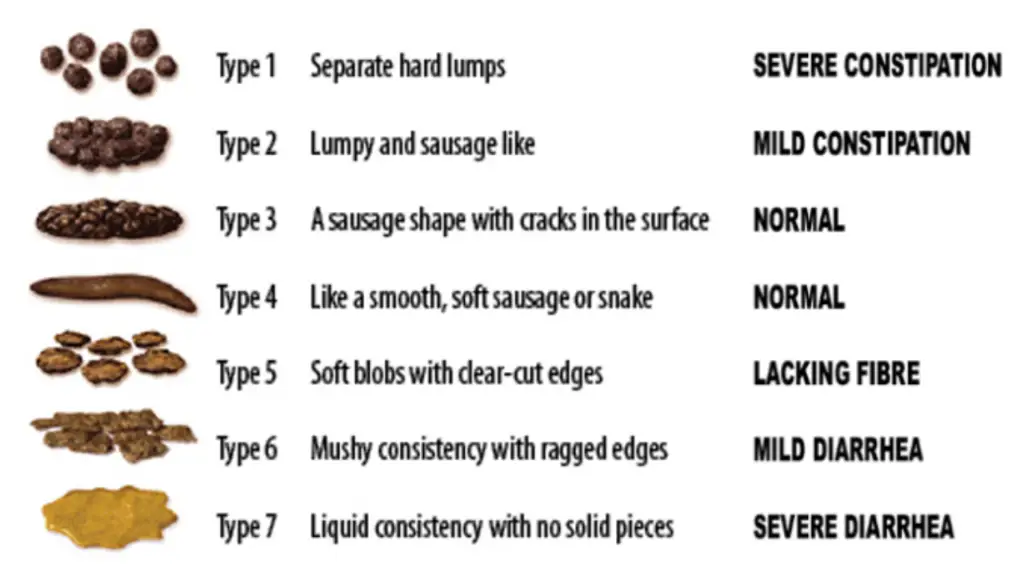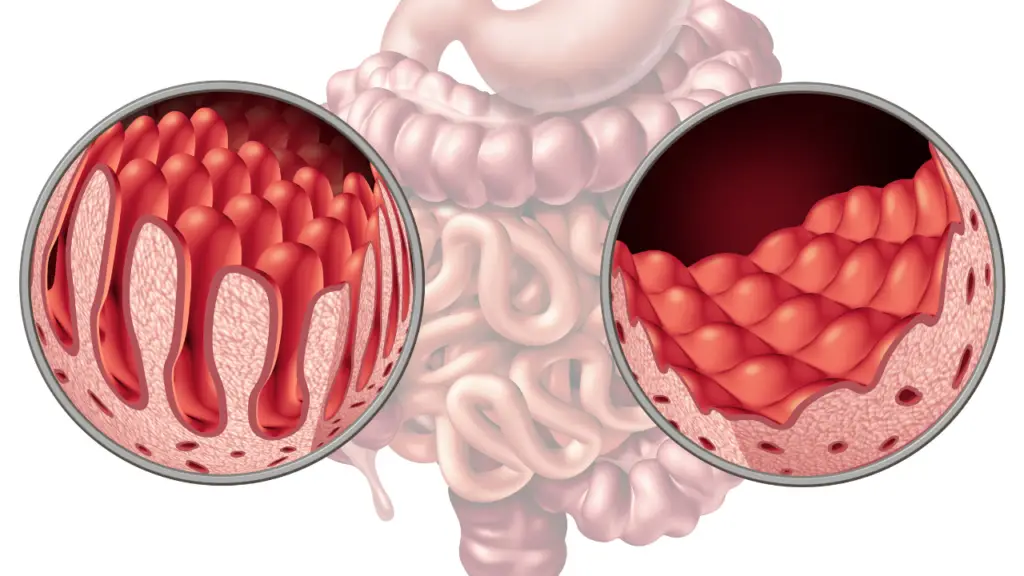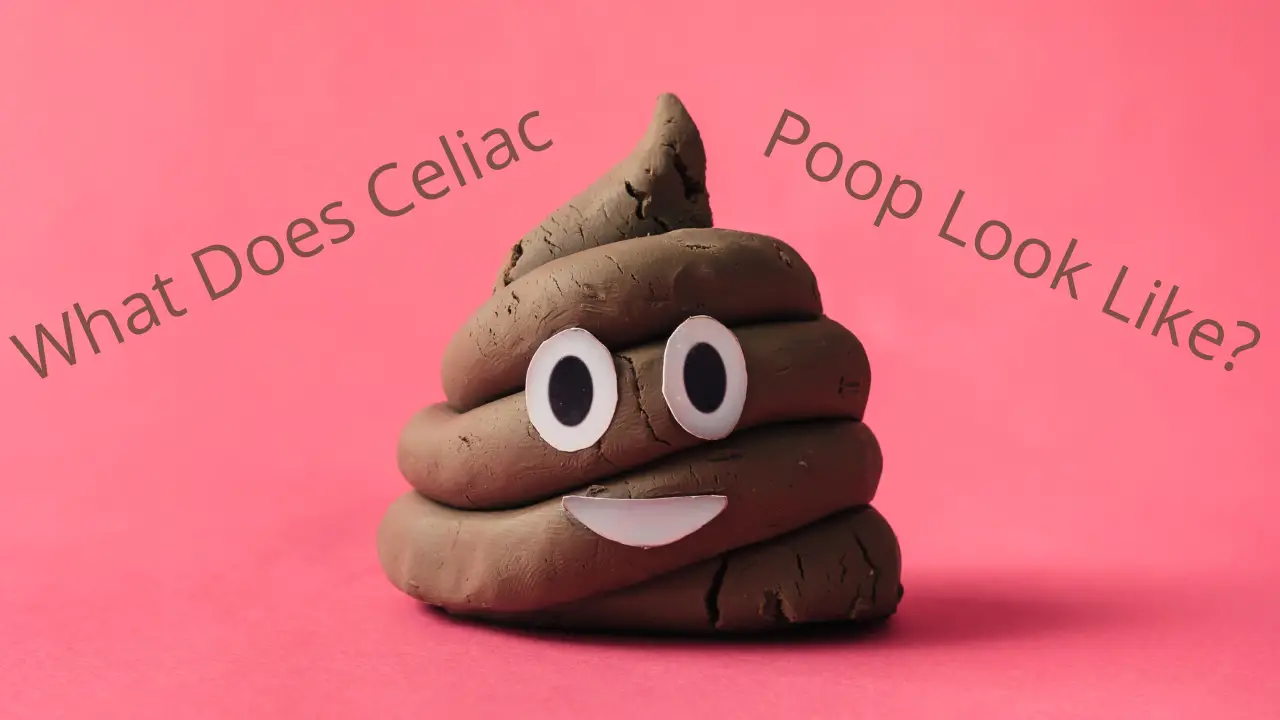If you worry about the way your poop looks, you are not alone. So many people suffer from digestive issues, whether it is from an autoimmune disorder or other factors. Having a productive bowel movement can often be satisfying. But, many times, your trip to the bathroom doesn't make you feel better but worse.
Celiac disease is one of the conditions that aggravate digestive issues. If your poop makes you go “Oh Shit,” literally, maybe it's time to figure out the problem. Here's what happens to your poop in untreated celiac disease.
Normal Poop- How Does It Look?
To compare the contrasts between healthy poop and celiac poop, you need to know one from the other before you begin distinguishing. In other words, let's get ourselves familiar with the world of what a healthy poop appearance is.
Healthy poop depends on various factors, namely color, smell, texture, consistency, and frequency. To make matters straightforward, the Bristol Stool Scale characterizes stool based on seven types, using a study conducted on 2000 individuals. The scale shifts from what constipated stool looks like to a healthy stool to fiber-deficient stool and finally one that indicates diarrhea.

According to the Bristol Stool Scale, healthy poop should be brown, credits to Bilirubin- which is when your red blood cells in your body break down, they form a pigment. The texture should correspond with a few inches long log, sausage, or snake.
If it's not soft and firm and sways to either one of the two extremes, it's not healthy. The most diversifying characteristic lies in the frequency because it differs for each person. But, on average, you should be running towards the bathroom for your number two at least once daily.
What Makes Celiac Poop Different?
Celiac disease and even gluten sensitivity, in some cases, can twist around various systems of your body. One of the primary systems affected by gluten intolerance is the digestive system, which ultimately extends to the excretory system. With gluten intolerance, several things are happening inside your body as soon as you take a bite of gluten-based food.
Once gluten enters the body of a celiac, the body starts to react against gliadin, the protein in gluten particles. It triggers a chain of events that leads the body to produce antibodies to eradicate the gluten particles. These antibodies begin damaging the intestinal lining alongside attacking gluten.

The damage results in intestinal inflammation and flattens the villi on the surface of the small intestine. In return, the intestines are no longer capable of adequately absorbing nutrients from digested food.
Long-term trouble in absorbing nutrients becomes a case of malabsorption, thus, taking its toll on your poop's characteristics. Don't be mistaken though, a single gluten-based meal causing indigestion can make your next trip to the bathroom a miserable one.
Signs You're Possibly Suffering From Celiac
There are many symptoms of celiac disease that you may observe after eating gluten. Included in this extensive list are changes in your stool. Identifying these symptoms and taking the proper steps can save you from worrying poop routines.
In some cases, these can help reveal undiagnosed celiac disease too. We're saying that you should take a closer look at your poop every once in a while.
Your Poop is Hard to Pass
Difficulty in passing stool, hard stool, and infrequent stool collaborate to form the condition known as constipation. You'll often hear celiacs complaining about diarrhea upon accidental gluten consumption, but the opposition, i.e., constipation, rests its case in celiac disease as well.

Omitting gluten-based foods from your diet usually includes cereals, pasta, bread, and baked goods, made from gluten-containing grains. These grains are a significant provider of the daily fiber requirement, both soluble and insoluble.
Therefore, eliminating these foods, more often than not, results in fiber deficiency if your gluten-free diet does not contain fiber-rich foods.
So, what's the link, and why are we naming fiber when discussing constipation? Fiber regulates our digestive system and gives stool the bulky and firm texture that is considered healthy. Without sufficient fiber intake, your poop will turn out to be in the form of small hard lumps that are difficult to excrete. Dehydration can also make your poop hard to pass.
Your Poop is Loose or Watery
Diarrhea is not uncommon. It's when your poop is in a liquid form or too soft, and you're running to the toilet multiple times a day. You're likely going to suffer from diarrhea several times in a year.
Occasional diarrhea comes and passes on its own, meaning you don't need to intervene in it or take additional measures to make it go away. However, chronic diarrhea, or long-term diarrhea, that either isn't resolved in a few days or reappears repetitively is a concern.

Celiacs suffer from loose or watery stools whenever they ingest gluten because of the body's incompetence to digest food and absorb nutrients. Symptoms like abdominal cramps and bloating accompany diarrhea.
Causes of diarrhea, aside from gluten intolerance, include Irritable Bowel Syndrome (IBS), lactose intolerance, and Small Intestinal Bacterial Overgrowth (SIBO). These conditions are more prevalent in celiacs than healthy individuals and give rise to several digestive issues, including diarrhea.
Your Poop is Yellow or Pale
Multicolored poop sometimes results from the food you're eating, for example, green vegetables or beetroot. On the other hand, yellow or pale-colored poop is a sign of trouble. For instance, yellow color indicates liver, gallbladder, and pancreatic diseases. Undiagnosed celiac disease is another source of this problem.
On ingestion of gluten, a coeliac patient's body excretes food out of the intestines faster, which causes a lack of Bilirubin in the feces. Similarly, in celiac disease, malabsorption of nutrients culminates in most of the fat exiting from the body in its original form without being absorbed. Thus, the lack of color pigment and increased fats in the stool proceed to yellow poop.
Your Poop is Bulky and Floats
Poop that is bulky won't go down the toilet when you flush. Or poop that floats on the top of the water in your toilet bowl is another arrow pointing towards celiac disease. In medical terms, this condition is called steatorrhea.
Again, the cause is excessive fats in your stools, which otherwise your body should be able to absorb. Healthy poop only has small amounts of fats. But when the intestines suffer from damage proceeding to malabsorption, all that ingested fat is excreted out.
Another interlinking condition with steatorrhea is exocrine pancreatic insufficiency (EPI). In this, the pancreas does not produce enough enzymes to break down ingested food, giving your poop the bulkier texture that makes it difficult to make it go down the toilet.
Your Poop Smells Weird

We're not saying healthy poop disperses appealing fragrance that'd make you want to store it in a perfume bottle. But celiac poop is incredibly foul-smelling, more so than a healthy stool. This feature comes with a greasy-looking state of your stool too. Gluten intolerance makes the body incapable of absorbing fats, making stool greasy and foul-smelling.
Your Poop Has Excessive Mucus
Mucus is a routine accompanier of stool. A healthy stool has minute amounts of mucus in it, which is how the excretory material passes through the gastrointestinal tract towards the anus. Without mucus, things get tricky when the time to poop arrives.
In celiac disease, when the intestinal lining is damaged, the body produces excessive mucus in the GI tract. Therefore, your poop comes out with more of the egg-like, sticky substance on the surface.
Commonly, excessive mucus comes with a variety of symptoms like diarrhea, abdominal cramps, and bloating. Conditions like lactose intolerance and IBS may also trigger excessive mucus production in the body.
What Can You Do Next?
The next step is to identify the problems and find the solution. Individuals who have not yet been diagnosed with celiac should go for a medical diagnosis when they notice these red flags. Considering it is celiac disease, shifting to a gluten-free lifestyle eliminates most of your poop issues.

If it's not, your doctor will identify the underlying cause of the problem and suggest the treatment. Never delay a doctor's appointment in case of dire circumstances and severe symptoms.
What if Going Gluten-Free Isn't Helping?
Firstly, you need to understand that going gluten-free doesn't magically turn your life around overnight. It takes a few days for your body to get used to the change, and for celiac patients, it takes longer for the body to heal and return to a healthy system.
You may still experience diarrhea, constipation, abdominal cramps, bloating, and other symptoms for a while after switching to a gluten-free diet.
Despite going gluten-free for a considerable duration, unhealthy poop may point towards other physical conditions, especially the ones to which celiacs are increasingly prone. Celiac disease increases the tendency of lactose intolerance and IBS.
In these situations, you'll need to cut out dairy products and figure out what triggers your IBS alongside gluten elimination. Most people state relief in their IBS symptoms after switching to a low FODMAP diet.

Final Words
Now that you're familiar with the poop problems that come with celiac, it's time to resolve them with a doctor's consultancy and a gluten-free diet.
Beware of accidental gluten ingestion since it can once more trigger these issues and make you suffer the next few days.
Once you have shifted your diet to eating gluten-free, keeping track of any problems that arise is recommended.





